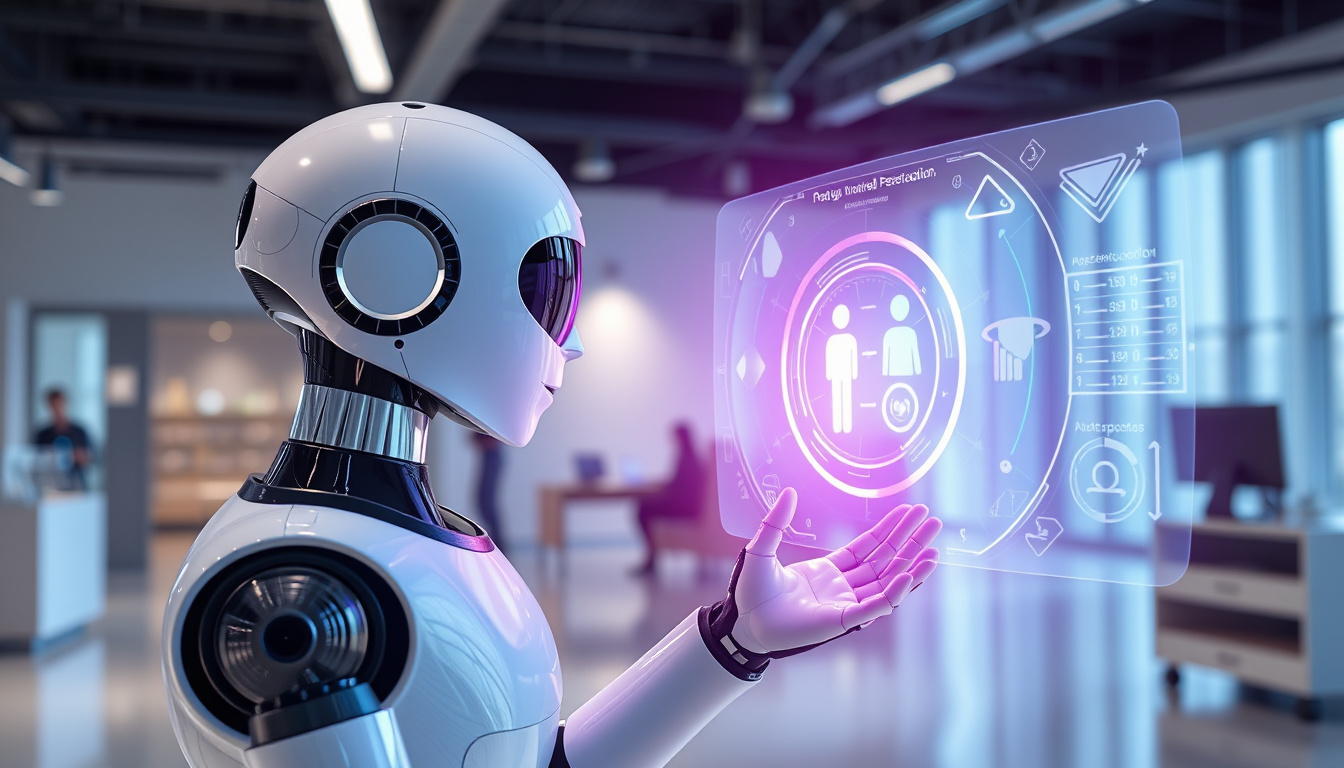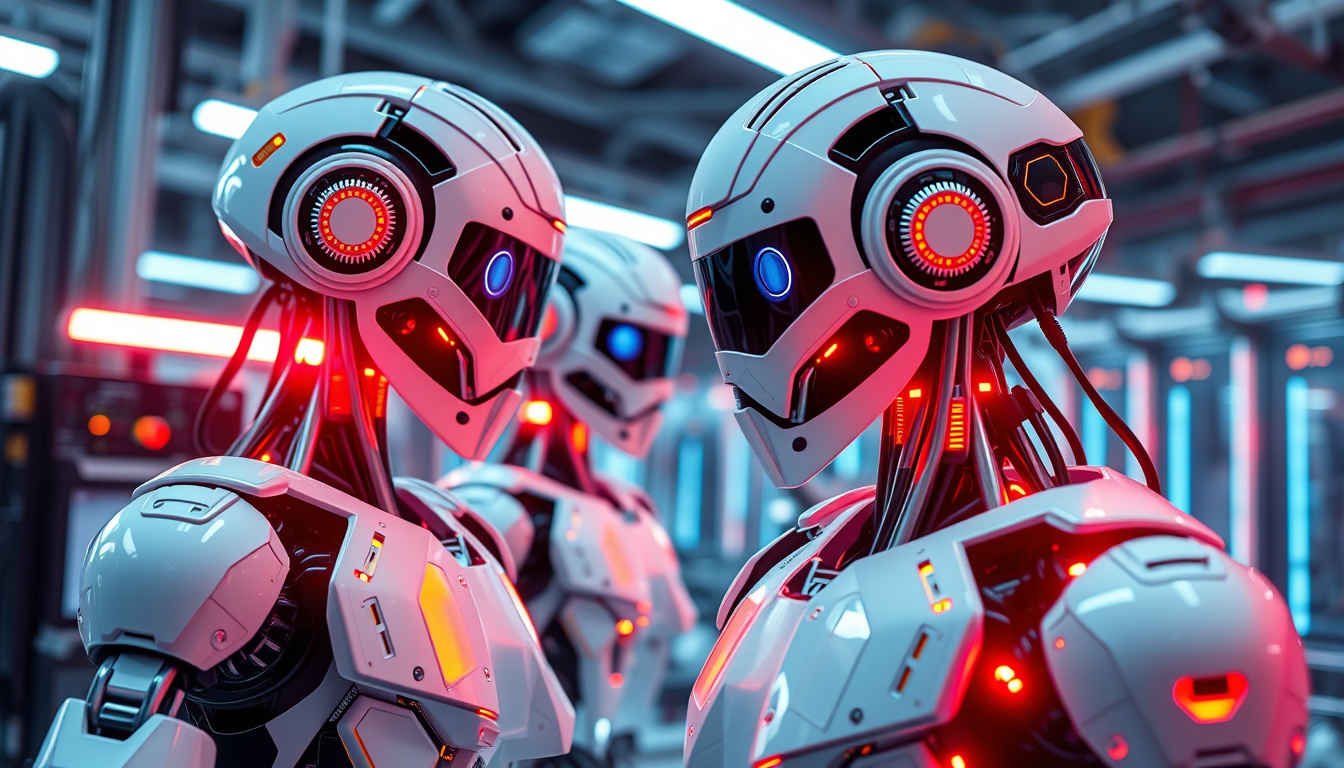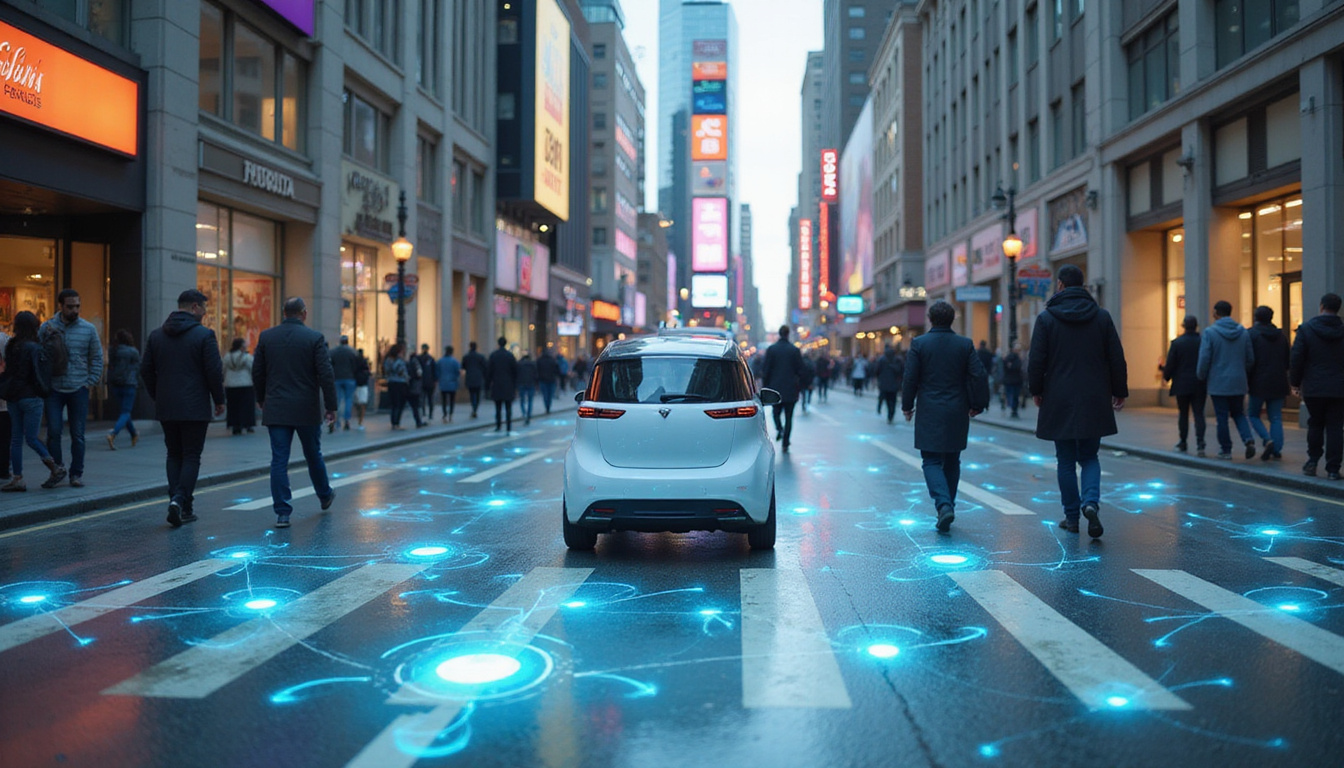In the rapidly evolving landscape of technology, intelligent robotics stands out as a key catalyst driving automation and smart technology innovation. By integrating artificial intelligence (AI), machine learning, and advanced sensors, intelligent robotics systems are transforming industries—from manufacturing and healthcare to logistics and agriculture. The rise of these smart machines is not just enhancing efficiency but also redefining how humans interact with technology in everyday life.
In this article, we delve into the transformative power of intelligent robotics, exploring how it revolutionizes automation and fuels the next generation of smart technologies. We’ll discuss its applications, benefits, challenges, and what the future holds for this compelling field.
What Is Intelligent Robotics?
Intelligent robotics refers to robotic systems equipped with AI capabilities that allow them to perceive their environment, make decisions, learn from experiences, and execute complex tasks autonomously or semi-autonomously. Unlike traditional robots that perform pre-programmed repetitive actions, intelligent robots adapt and improve over time through data-driven insights.
These robots combine a suite of technologies including:
- Machine learning and deep learning algorithms
- Computer vision and image processing
- Natural language processing
- Sensor fusion and advanced controls
- Real-time data analytics
Their heightened cognitive functions enable intelligent robotics to solve problems, communicate with humans, and cooperate with other machines, thus opening up new frontiers in automation and smart technology.
Applications of Intelligent Robotics Across Industries
1. Manufacturing and Industrial Automation
Intelligent robotics is revolutionizing manufacturing by enabling smart factories—often termed “Industry 4.0”—where robots work alongside human operators. These robots efficiently handle tasks such as assembly, quality control, packaging, and machine tending. Their ability to learn makes it easier to customize production runs and ensure higher precision.
2. Healthcare and Medical Robotics
In healthcare, intelligent robotic systems assist in surgeries, rehabilitation, diagnostics, and patient monitoring. Surgical robots with AI enable minimally invasive procedures while adapting to patient-specific conditions. Intelligent robots also support elderly care by assisting with mobility and medication management.
3. Logistics and Supply Chain Management
Warehouses and distribution centers benefit significantly from intelligent robotics that optimize picking, packing, and transportation. Autonomous mobile robots (AMRs), guided by AI, navigate complex environments, improving order fulfillment accuracy and speed.
4. Agriculture and Environmental Monitoring
Precision agriculture leverages intelligent robotics to monitor crop health, optimize resource use, and perform harvesting. Drones equipped with AI analyze soil conditions and detect pests, helping farmers increase yields sustainably.

5. Service Industry and Customer Interaction
Robots enhanced with natural language capabilities serve as customer service agents in hotels, retail stores, and banks, providing information and assistance. Their ability to understand and respond to complex queries makes service interactions faster and more personalized.
Key Benefits of Intelligent Robotics in Automation and Innovation
Intelligent robotics delivers numerous advantages that drive its adoption in various sectors:
- Enhanced Efficiency: Machines operate 24/7 without fatigue, expediting processes and increasing throughput.
- Improved Accuracy and Quality: AI-powered systems reduce human error and maintain consistent quality standards.
- Cost Reduction: Automation decreases labor costs and minimizes waste through precision.
- Safety Improvements: Intelligent robots can perform dangerous or repetitive tasks, reducing risks for human workers.
- Scalability and Flexibility: Adaptability permits robots to handle varying tasks and changing production demands.
- Data-Driven Insights: Continuous learning and analytics provide actionable intelligence for process optimization.
Challenges Facing Intelligent Robotics
Despite the promising prospects, intelligent robotics still faces several challenges:
- Complexity and Cost of Implementation: Integrating AI technologies and sensors can be expensive and require specialized expertise.
- Ethical and Social Concerns: Automation may displace jobs and raise questions about data privacy and accountability.
- Technical Limitations: Robots may struggle with unpredictable environments or nuanced human interactions.
- Security Risks: Connected intelligent systems are vulnerable to cyber-attacks requiring robust defense mechanisms.
Addressing these barriers is critical for fostering widespread adoption and trust in intelligent robotics.
How Intelligent Robotics is Shaping the Future of Smart Technology
With ongoing advancements in AI, computing power, and sensor technology, intelligent robotics is poised to unlock unprecedented smart technology innovation:
- Collaborative Robots (Cobots): Designed to work safely alongside humans, cobots will augment workforce capabilities without replacing jobs.
- Edge AI Integration: Processing data on-device rather than in the cloud will enable faster, real-time decision-making for robots.
- Autonomous Systems: Self-driving vehicles and drones will benefit from enhanced robotics intelligence for navigation and task execution.
- Personalized Robots: Robotics tailored to individual preferences will improve accessibility and quality of life in homes and workplaces.
The continuous feedback loop between AI and robotics will accelerate innovation cycles and create smarter, more intuitive systems.
Key Components of Successful Intelligent Robotics Deployment
When implementing intelligent robotics, organizations should focus on the following components to maximize benefits:
- Robust Data Infrastructure: Collecting high-quality data is vital for training AI models and enabling learning.
- Interdisciplinary Collaboration: Engineers, AI experts, and domain specialists must work together to design effective systems.
- Human-Centered Design: Ensuring robots complement rather than replace human skills fosters acceptance and productivity.
- Security and Compliance: Protection against cyber threats and alignment with ethical standards safeguard operations.
- Continuous Monitoring and Improvement: Regular updates and performance assessments keep robots effective and safe.
Frequently Asked Questions About Intelligent Robotics
Q1: What distinguishes intelligent robotics from traditional robotics?
A1: Intelligent robotics integrates AI capabilities such as learning and decision-making, enabling autonomous and adaptive behavior. Traditional robots follow fixed instructions with limited flexibility.
Q2: How is intelligent robotics impacting automation in industries?
A2: Intelligent robotics enhances automation by improving precision, efficiency, and adaptability, allowing industries to optimize workflows and reduce operational costs.
Q3: Are intelligent robots safe to work alongside humans?
A3: Yes, especially collaborative robots (cobots) are designed with safety features like sensors and soft mechanics to operate safely near human workers.
The Role of Industry 4.0 in Intelligent Robotics Innovation
Industry 4.0, the digital transformation of manufacturing and related industries, relies heavily on intelligent robotics to realize smart factories. These interconnected systems employ robotics equipped with AI to collect data, communicate, and make autonomous decisions, enhancing productivity and agility. According to the World Economic Forum, intelligent robotics and automation will drive a significant increase in global manufacturing efficiency in the coming decade (source).
Conclusion: Embrace the Intelligent Robotics Revolution
The emergence of intelligent robotics is revolutionizing automation and smart technology innovation across every sector. These intelligent machines blend AI with mechanical dexterity to deliver operational excellence, safety, and new capabilities that were once unimaginable. As industries evolve and digital ecosystems mature, embracing intelligent robotics will be not just advantageous but essential for maintaining competitive advantage.
Are you ready to harness the potential of intelligent robotics to transform your business or workflow? Investing in these cutting-edge technologies today can unlock remarkable efficiencies and innovations tomorrow. Explore partnerships with leading robotics experts, integrate smart systems, and be at the forefront of this automation revolution. The future is intelligent—and it’s already here.




